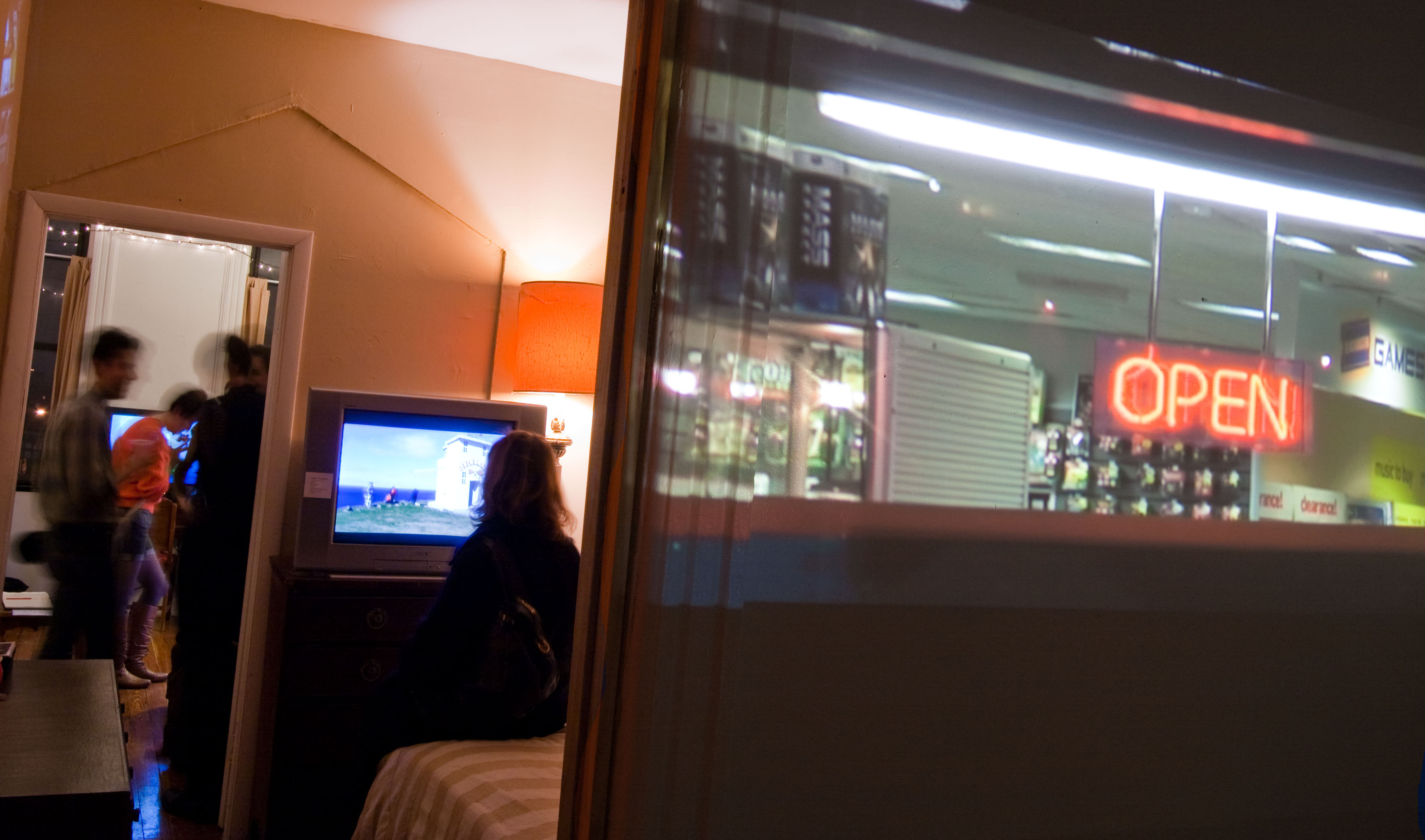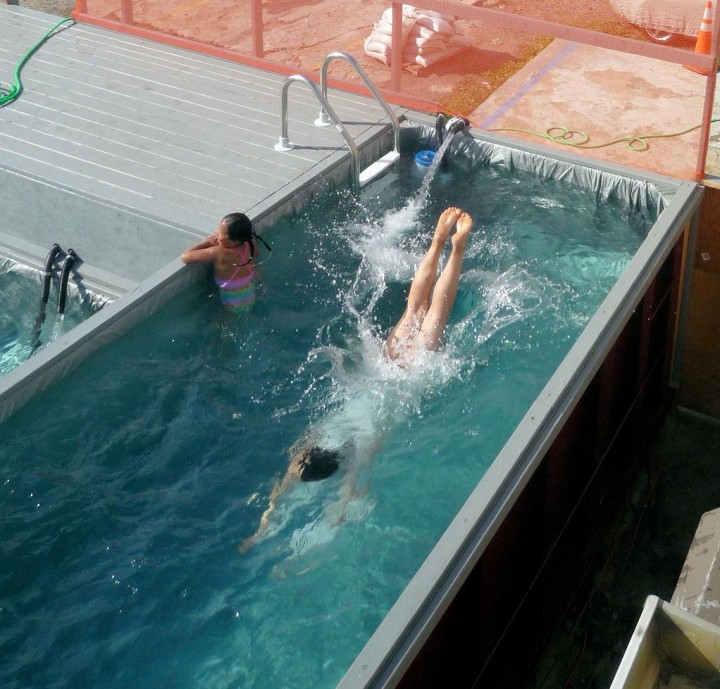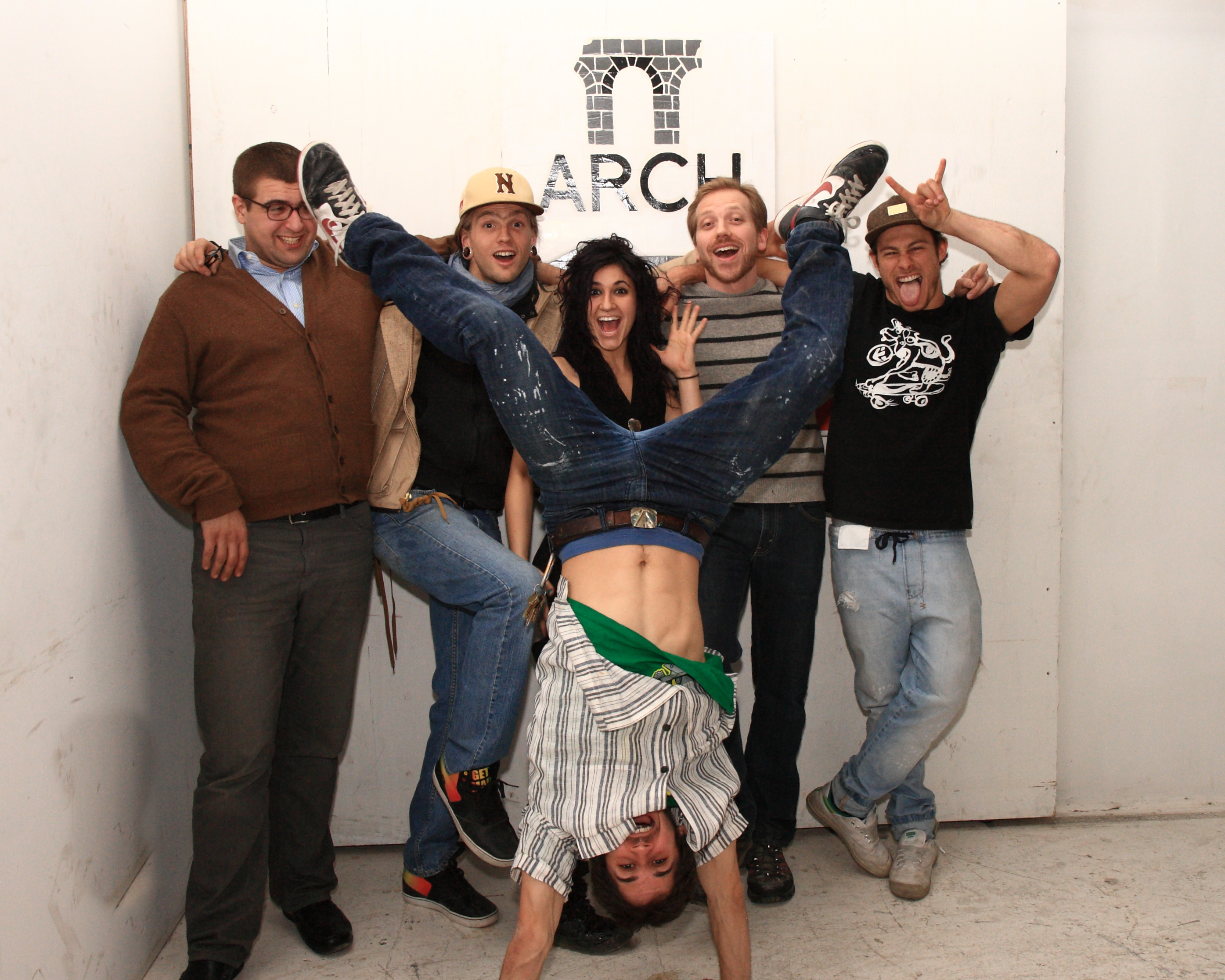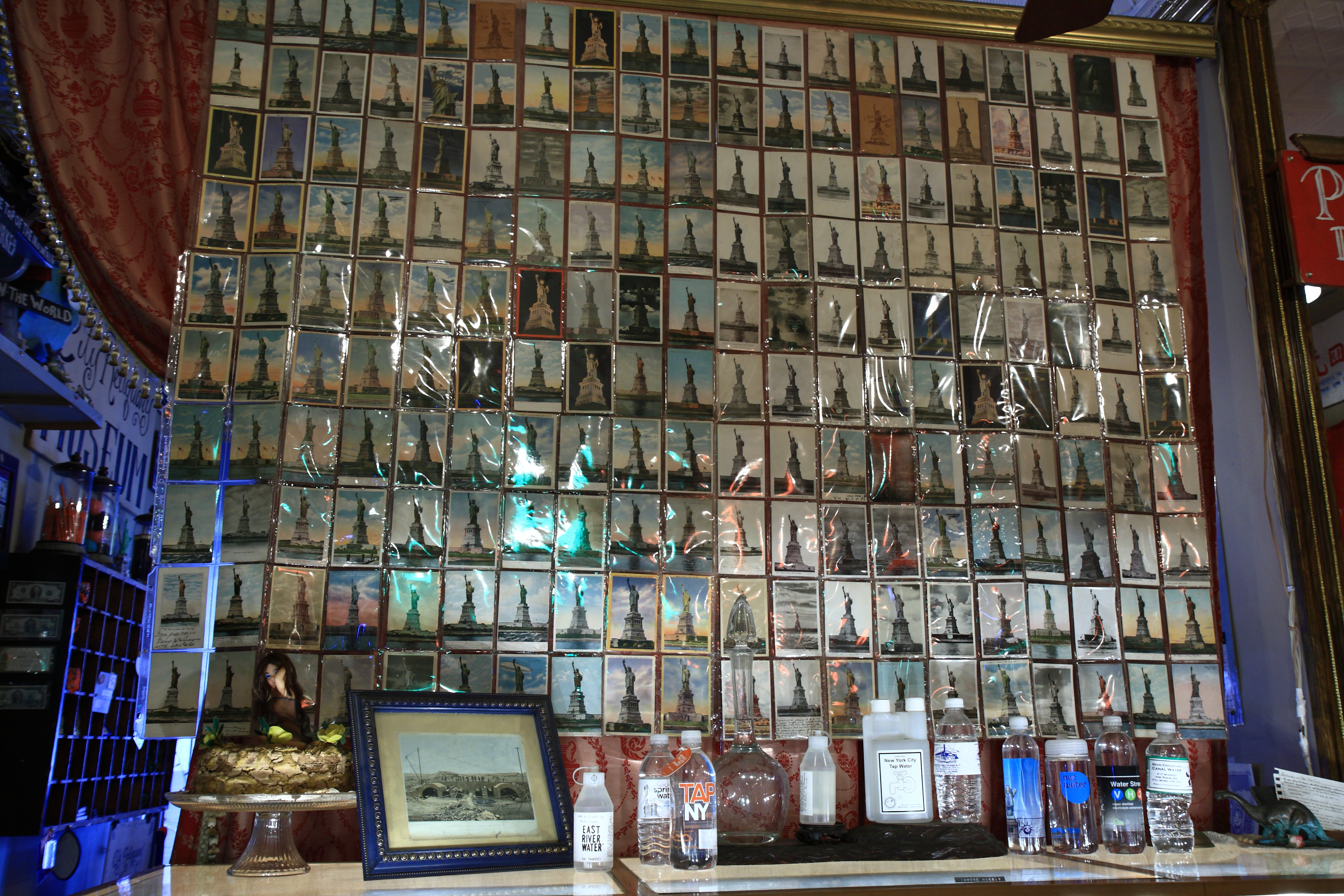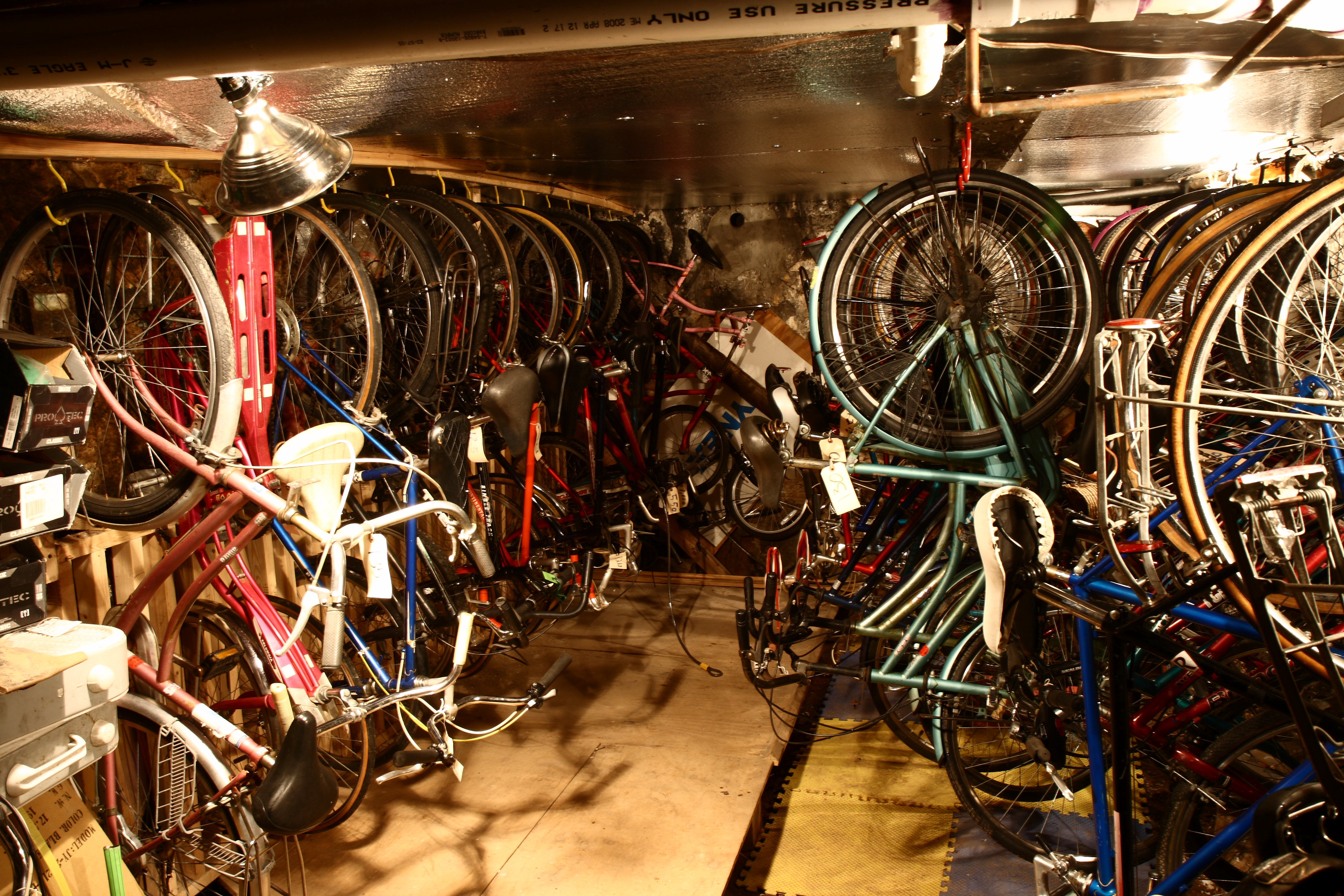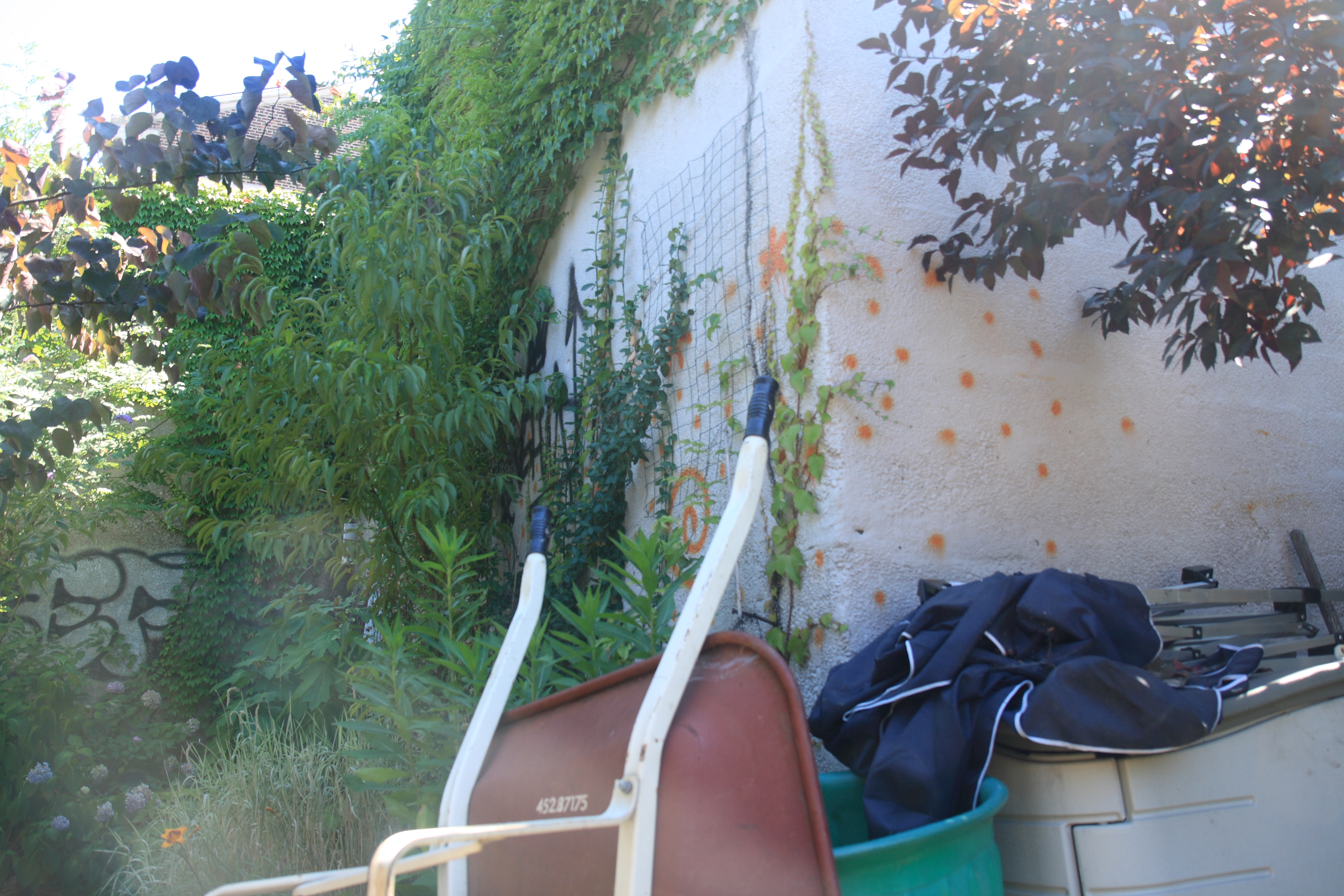gowanus ballroom
neighborhood: gowanus | space type: art & events | active since: 2010 | links: website, facebook
Gowanus Ballrooom is one of my very favorite spaces, one I can’t help updating and re-writing about again and again. (In fact, check out my article from their Fall 2011 show “Paint Works” on Gowanus Your Face Off!) The space, most of the time, is home to Serett Metalworks, but three or four times a year it gets transformed into a massive art spectacle. They’re doing so much to make a home for emerging and underground artists in New York, and every one of their shows is spectacular—and necessarily ambitious, given the sheer scope: the Ballroom is 16,000 square feet on two levels, with 50-foot ceilings. You have to slink down a super-sketchy dark alley on the canal to get to it, but oh, man, is it worth it.
The group shows feature outrageously great art from up to fifty artists at a time, including huge metal sculptures, lush photographs, hyperreal paintings, abstract assemblages, quirky dioramas, stained-glass windows, woven cloth streamers, giant wooden installations you can climb around in, collages you can run your fingers through, intricate ink drawings, shifting projections, and more. Plus live entertainment! Aerialists like Seanna Sharpe (in her first performance since her stunt on the Williamsburg Bridge), fire dancers like Lady C and Flambeaux Fire, and of course bands, including Crooks & Perverts, Les Bicyclettes Blanches, Apocalypse Five and Dime, Yula and the eXtended Family (from Hive NYC), and Morgan O’Kane, the absolute most phenomenal banjo player you’ve probably never heard (unless you ride the L train a lot). At the 2011 Art & Architecture Show, he played past 2 a.m., almost two hours of just the best music ever, and I haven’t seen so much foot-stomping, arm-flailing, whooping joy since… well, since the last time I saw Morgan play, I guess.
Q&A with Josh, the Ballroom’s founder, and Ursula, art show curator
brooklyn spaces: Give me a quick history of the space.
Josh: I run Serett Metalworks, and I moved the shop here a year ago from Nostrand Avenue. This is twice the space I need, but it was the bottom of the economy crash, and when I saw the space I knew that I would use it for other things besides metalwork. It’s a fucking beautiful shit hole, I love it. It doesn’t make sense for me to run a metal shop here, because you can’t heat it in the winter, there’s always water leaks, and it gets too hot in the summer. But we deal with it. We build weird art and architectures structures, so the people who work here, it kind of inspires them to do better work, to be happier about their job. That’s a big part of it, just the beauty of this insane old place. It used to be a steel mill, a boatyard, a cannonball factory, a chemical factory. The history here is ridiculous.
brooklyn spaces: In the metal shop, is it all your projects? Do other people do their projects here too?
Josh: It’s mainly our shop where we fabricate our stuff, but I also work with all these different groups. Someone comes and says, “Hey man, I need lockdowns for this WTO protest, can you help me build them?” Or like Swimming Cities, a bunch of fucking hippies who are building pontoon boats they can collapse, ship to India, and sail five hundred miles down the Ganges River. How fucking cool is that? I want to support those fucking maniacs, because that is awesome.
brooklyn spaces: What made you start doing art shows?
Josh: I always wanted the space to be dedicated to art and architecture and engineering, mostly because architects and engineers, their social life is so fucking boring. But it’s a really interesting group of people doing really interesting work, and I like the idea of art and architecture and engineering together, because there’s a lot of aspects of engineering and architecture that are art. So the idea was to have a space for all three. We did the first Art & Architecture show in early 2010. The whole thing was thrown together in two weeks, and it went real well. Then we did another one about six months later that was really successful and really fun. But I learned it’s a lot of fucking work putting on a show, it’s an insane amount of coordination, and the person who’s doing the coordination loses their mind not at the end, but halfway through.
Ursula: I stayed pretty sane.
Josh: Yeah, I’m getting there. I’m just finishing the story. Anyway, it blew my mind how much work it was. So I was like, all right, if our next show is going to be twice as big, it’s going to be a major ordeal. So I asked Ursula to get involved, and she came in and took the steering wheel, coordinating, organizing, categorizing, social working, all this stuff that has to come with an intense art show. And it was a great move, she really handled the stress well. There’s a lot of fucking stress involved. We pick people who do great art, but when you do that, you’re going to be dealing with some characters. That’s where the social-working aspect comes in.
Ursula: I’m actually training to become a social worker, so it worked out well. I think my background is just the right balance of art and psychology. It was a challenge and it was fun. I like doing really difficult things. If I see something that looks like you can’t do it, I’m like, “Okay, let’s figure it out!” I met a lot of really great people, and it was pretty inspiring for me as an artist.

Morgan O'Kane, photo by me
brooklyn spaces: What happens to the metal shop during a show?
Josh: Believe it or not, moving the whole shop out of the way only takes three or four hours. And while the art show is up, we’re still fucking welding and grinding. All my guys love it. Setting up for this show, every single one of them came and worked fifteen, twenty hours for free, just because they loved it.
Ursula: Of course, they snuck their own artwork in as well. I’d come in and be like, “Where did that come from?”
brooklyn spaces: How do you think Brooklyn affect a space like this, or how does a space like this affect the future of art in Brooklyn?
Josh: The beauty of the Gowanus Canal is that it’s now a Superfund site, and that means that 2,000 feet from the edge of the water, in any direction, you can’t build housing or food service of any type. So this area is going to be a great place for about ninety years. There’s always going to be this nice mix of industrial industry and art studios. It’s not going to be McKibben Street—puke my brains out.
Ursula: There’s also an artistic community here that’s a little bit hidden, so it’s a really nice spot to have a new exhibition space, because we’re not competing with what’s going on in Williamsburg or Chelsea. It’s a place for emerging artists to do what they want, and it’s huge. I mean, to be able to invite people who do the kind of large-scale installations that we had, and to tell them, literally: “You’ve got two weeks. Build something.” Not many places can do that. Especially when you’re dealing with artists who don’t have a name, and you’re just trusting them. So I think that’s something that we can offer to the neighborhood, and to the art community in general.
Josh: I started off working for Cooper Union, working with a lot of pretty big-name artists, and I was really turned off by the art world, how nasty it was, the money, everything was just politics and crap. This space is great because we can do it our way. We just fill it full of cool shit, and people fucking love it.
brooklyn spaces: Do you have any advice for other people who want to take on a project like this?
Josh: Just call us. You got something crazy? You think you have schizophrenia? That’s beautiful. Call us. We like that.
***
Like this? Read about more art & events spaces: Monster Island, Big Sky Works, Red Lotus Room, Gemini & Scorpio loft, House of Yes, Cave, Rubulad, Vaudeville Park, 12-turn-13, Werdink / Ninja Pyrate

















